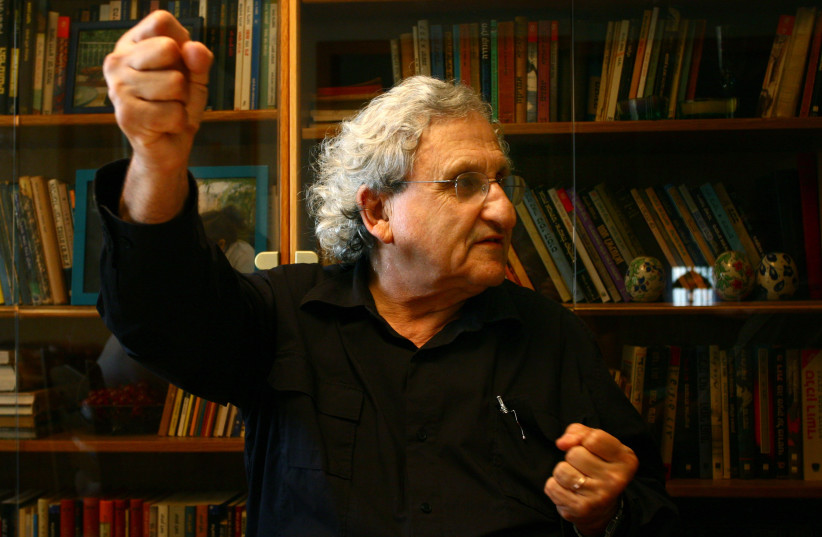A.B. Yehoshua, one of Israel’s greatest writers, leaves behind a body of work that is both intensely Israeli and also universal in its scope, translated into dozens of languages and published and studied around the world. In his generation, only Amos Oz rivaled his acclaim and importance as a fiction writer.
An Israeli Faulkner
The New York Times called him “a kind of Israeli Faulkner,” and William Faulkner was clearly one of his strongest influences, particularly in such works as The Lover (1977), A Late Divorce (1982), and Mr. Mani (1989).
Like Faulkner, he was concerned with national identity and how it shaped his characters’ lives. While Faulkner delved into the lasting influence of slavery and how it affected America, Yehoshua focused on the Arab-Israeli conflict from his earliest works.
Later in his career, Yehoshua looked at how the Sephardi and Mizrachi heritage he had dismissed in his youth was critical to life in Israel. But while there are strong political undercurrents in his work, his skill as a fiction writer always trumped his politics. His characters end up where their destinies lead them, not where an ideologue would want them to go.

Whatever his subject, Yehoshua always looked squarely at the reality around him and made it so vivid that readers across the world could identify with the characters he created.
The stories themselves
He made his name and secured a place as part of the “New Wave” of Israeli writers who emerged in the 1960s and 1970s through a series of extraordinary short stories.
One of them, Facing the Forests, published in 1968, has had a particularly strong influence to this day. It is the highly symbolic story of a depressed Israeli graduate student who takes a job as a forest ranger, watching for fires in woods that have grown over the ruins of an Arab village. He is aided by an Arab servant who once lived in the village and had his tongue cut out during the Independence War, and who eventually burns down the forest. This story, taught today in many Israeli schools, has likely had a more lasting political influence than any of Yehoshua’s op-ed pieces.
His other notable short stories include Three Days and a Child, which tells of a student babysitting the son of the great love who left him. It drew praise for its beautiful writing, some of which cannot quite be translated, such as the characters’ names, which are mainly Hebrew words for animals, and his lover, who is called Haya, Hebrew for “alive” or “animal.”
Fittingly, this was adapted for the screen in 1967 by the most complex Israeli director of that era, Uri Zohar, who died two weeks ago. Three Days and a Child won a major prize at the Cannes Film Festival, and many of Yehoshua’s other works were adapted for both the screen and the stage.
In a dazzling series of novels starting with The Lover, Yehoshua explored the themes that would dominate his career, among them the love-hate, push-and-pull relationship between Israel and the Diaspora.
In this novel, an Israeli living in France returns to Israel to settle his dying grandmother’s estate just as the Yom Kippur War breaks out, and eventually evades military service by hiding out with the haredi Orthodox and painting his grandmother’s blue car black, an obvious reference to the ascendance of the religious sector.
The Lover, which like most of his work is told by various characters (as were many of Faulkner’s novels), offers an epic portrait of early-1970s Israel featuring many perspectives, among them a young Arab garage worker and the garage owner’s flighty, rebellious daughter, who end up in bed together.
But perhaps more controversial than this plot development was a scene in which the daughter asked her mother, who was also her classroom teacher, why a Jewish national homeland in Israel was a natural and inevitable response to the Holocaust – this basic concept of Zionism made no sense to a teenage girl in Haifa in 1973.
The Lover was followed by A Late Divorce, another story of an Israeli returning from abroad and getting drawn back into the life of his messy family and homeland, which referenced The Sound and the Fury. In Open Heart, Yehoshua examined issues of Israeli identity against the backdrop not of the European diaspora, but of the Israeli attraction to the Far East, specifically India.
Exploring his roots
When he was well into his 40s, Yehoshua began to explore issues connected to his Mizrahi and Sephardi heritage – his mother was born in Morocco, and his father’s family had lived in Jerusalem for generations – in novels such as Five Seasons, about a Sephardi widower remaking his life following his Ashkenazi wife’s death; Mr. Mani, a look at various members of a Sephardi family that goes back through a thousand years; and A Journey to the End of the Millennium, about a Moroccan Jewish merchant in 999, which explores the divide between East and West, Jews and Muslims, and even, in a particular nod to Faulkner, slavery and freedom.
A Woman in Jerusalem tells the story of an Israeli human-resources manager who journeys to an unnamed corner of the former Soviet Union to bury an employee who was killed in a suicide bombing in the Second Intifada and looks at the Israel of the early 21rst century, with its terror attacks and reliance on foreign workers.
Yehoshua continued writing literature up until his death. Earlier this year, he published The Third Temple, a complex tale of religious Ashkenazim and Sephardim, set in Paris and Tel Aviv, which showed that although he protested in interviews that he was ready to say goodbye to life and writing, he could not give up his fascination with his homeland, and would explore it as long as he could.
